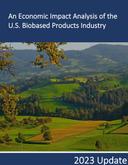Crunching the Numbers







SOURCE: GAMUT ONE STUDIOS
June 17, 2015
BY Anna Simet
If Renewable Fuels Association President Bob Dinneen didn’t light a fire under the ethanol industry at the International Fuel Ethanol Workshop in Minneapolis in early June, then it may be an impossible feat. Dinneen, whose career in the ethanol industry has spanned nearly a quarter of a century, delivered a rousing and passionate speech during the general session of the conference, where leaders of both the first- and second-generation sectors offered candid takes on the proposed U.S. EPA renewable volume obligation (RVO) numbers, reported on existing and future production, and provided insight on industry trends, challenges and competition.
Dineen referred to the RVO numbers as being “strangely familiar,” and said that the EPA believes it is attempting to break the blend wall, but characterized it as “scratching it—an incomprehensible step backward.”
He said it appears EPA learned “absolutely nothing” from the massive number of comments received during the RVO comment period, and that the agency has consistently made the wrong decision on any number of issues. He implored audience members to attend the public hearing to be held in Kansas City on June 25.
Brooke Coleman, executive director of the advanced ethanol coalition, brought things in a slightly more positive direction, declaring the RVO as being far from ideal, but said there is room for optimism, one reason being that the numbers are not yet final. “We could find ourselves in a profoundly different place…until then…we can’t be disappointed.”
Coleman also commented that the D3 renewable identification number (RIN) marketplace is being mismanaged, a point that Dan Cummings, president of Poet-DSM Advanced Biofuels, reiterated. Cummings described the current system as being “One of the more disappointing things for the new cellulosic ethanol producers…the EPA’s allowance for obligated parties to buy waiver credits instead of actual physical gallons. They’re undermining the D3 system,” he said.
Chris Standlee, executive vice president of Abengoa Bioenergy, discussed how the EPA’s rulemaking delays have hampered advanced biofuels in the U.S. “I can speak from experience that it has impacted investment…” he said, adding that it doesn’t mean that Abengoa has discounted the U.S. as a location for future facilities, as the company is actively pursuing a project using municipal solid waste as feedstock. However, Abengoa is largely focused on locations outside of the country, according to Standlee, including a second-generation facility in Brazil, colocated with the company’s ethanol plant there, as well as a second-generation facility in France, colocated with Abengoa’s existing starch facility.
Standlee reported that commissioning is ongoing at Abengoa’s cellulosic ethanol facility in Hugoton, Kansas, saying “Starting up a new technology plant is not for the faint of heart. We are producing, but not at full, annualized rates by any means.”
Cummings added that in the chemical processing industry, it generally takes about 20 years from when a process is isolated, to full-scale commercial production, and that Poet-DSM is currently working through some challenges in the pretreatment step of its process. The company brought online its first commercial-scale facility in Emmetsburg, Iowa, last fall.
When asked if the companies feel pressure from the EPA to meet RVO numbers —as the country’s first commercial-scale cellulosic ethanol plants—Cummings and Standlee said that most of the D3 category numbers will be fulfilled by biogas-based fuel over the next couple of years, but that the EPA polls advanced fuel companies to get an idea of what they project production will be.
Standlee added that while there is healthy competition when it comes to selling licenses for a respective cellulosic ethanol technology, all producers currently in the game want to see each other succeed.
The session ended with panelists urging audience members to send their comments to the EPA, and to attend the upcoming hearing in Kansas City, in order to achieve the best possible outcome in the final rule, due to be released in late fall. “There will be huge ramifications from what happens in November for the advanced ethanol market,” Coleman said.
Author: Anna Simet
Managing Editor, Biomass Magazine
asimet@bbiinternational.com
701-738-4961
Advertisement
Advertisement
Related Stories
The U.S. Department of Energy Bioenergy Technologies Office (BETO) announced up to $23 million in funding to support research and development (R&D) of domestic chemicals and fuels from biomass and waste resources.
The U.S. DOE has announced its intent to issue funding to support high-impact research and development (R&D) projects in two priority areas: sustainable propane and renewable chemicals and algal system cultivation and preprocessing.
Sens. Sherrod Brown, D-Ohio, and Pete Ricketts, R-Neb., in August introduced the Renewable Chemicals Act, a bill that aims to create a tax credit to support the production of biobased chemicals.
The Chemical Catalysis for Bioenergy Consortium, a consortium of the U.S. DOE’s Bioenergy Technologies Office, has launched an effort that aims to gather community input on the development of new biomass processing facilities.
USDA on March 8 celebrated the second annual National Biobased Products Day, a celebration to raise public awareness of biobased products, their benefits and their contributions to the U.S. economy and rural communities.
Upcoming Events










